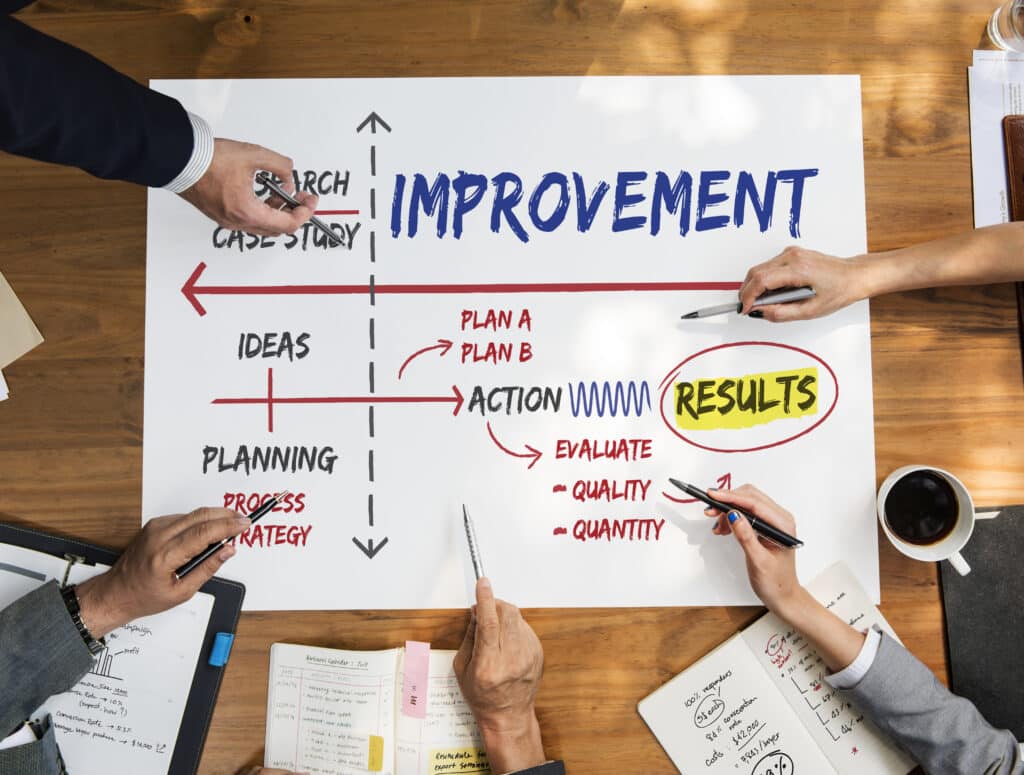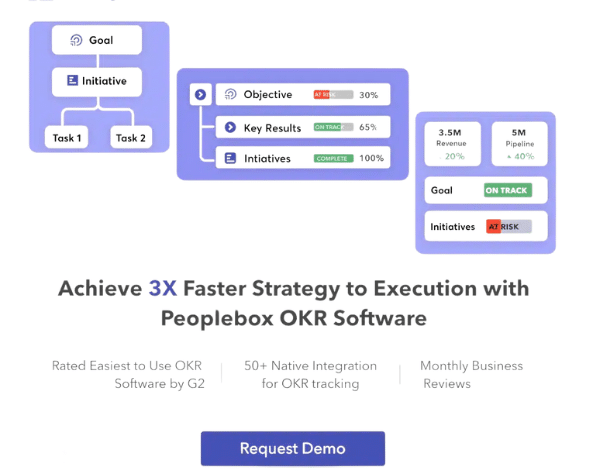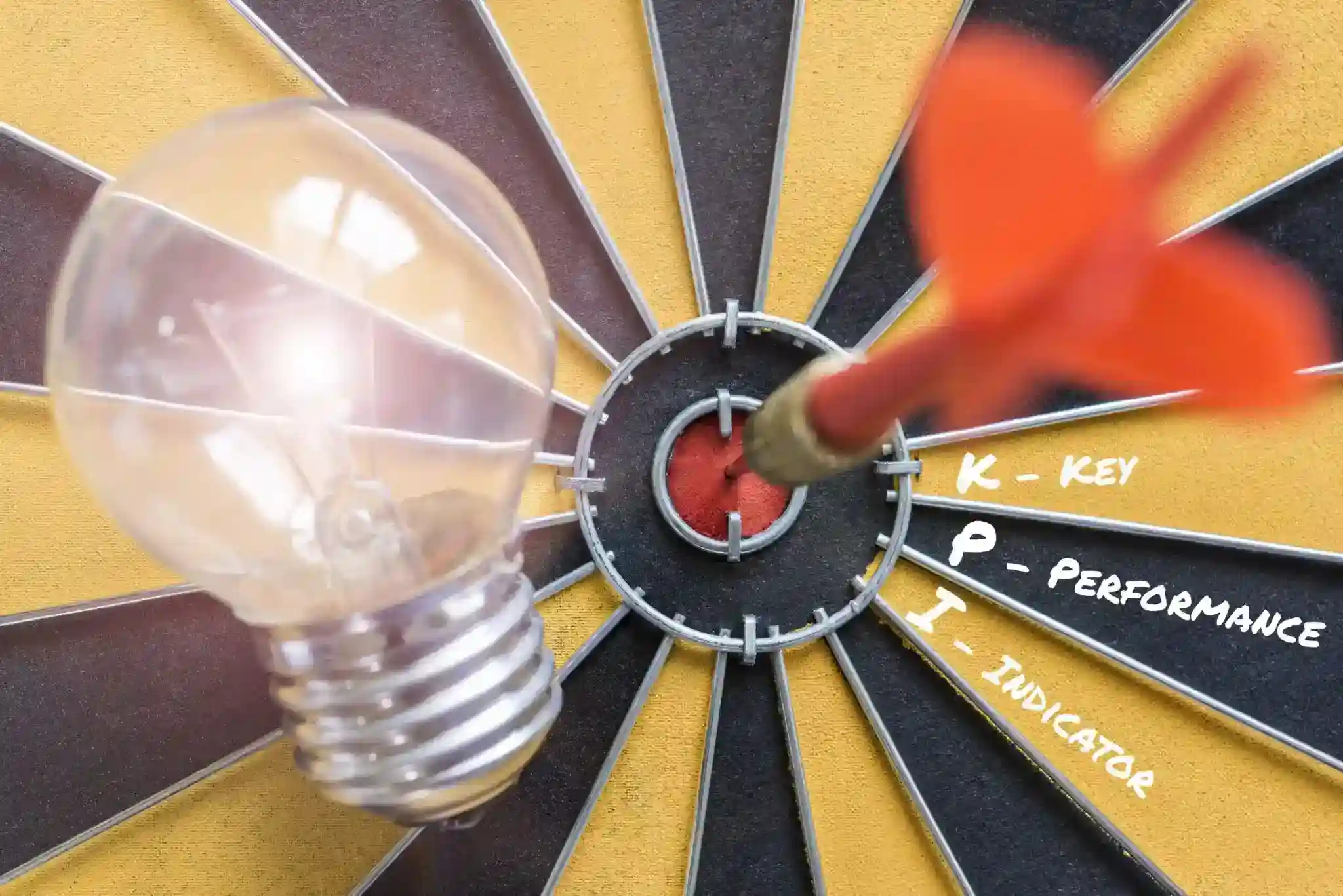An employee performance improvement plan is a strategy that aims at retaining valuable employees who have been under-performing lately. It helps employees in identifying their challenges and provides them with a chance to rectify themselves and improve their performance.
Over the years, PIPs have become a last checkbox that needs to be ticked off before you finally say goodbye to the employee. This practice has garnered PIPs the reputation of being a superficial move and a clerical tactic. The reality, on the other hand, stands different.
An employee performance improvement plan helps a manager in repolishing a valued employee. It gives a manager an opportunity to set things right before she is left with no option but to take a hard decision.
In this article, we explore what an employee performance improvement plan stands for and its authentic objective. We will also throw light on how you can manage it more efficiently in the bleak times of the Coronavirus pandemic.
What Is An Employee Performance Improvement Plan?
Formally speaking, an employee performance improvement plan is a methodology that specifies undesirable behaviour and performance deficiencies of an employee while mentioning set goals to be achieved by them in a stipulated period.
It aims to focus on two major aspects that affect employee performance –
- Recurring behaviour which has led to the deterioration of employee’s quality of work.
- An action plan to rectify this behaviour and emerge as a better-equipped professional.
It is a plan for redressal and rectification. But, it is mostly regarded as the last warning, and employees do not take it positively. As a manager, you have the power to change this perception and drive better results with an effective employee performance improvement plan.
If channelized with positivity, an employee performance improvement plan can reap many benefits. Let’s discuss some of them –
Benefits Of Employee Performance Improvement Plan (PIP)
1. Helps Identify and Address Performance Challenges
There may be many reasons why your direct report is failing to live up to her potential. On a usual workday, you may not get a chance to discuss them at length and help your employees. With a performance improvement plan, you can address them specifically and help your employees in resolving them.
2. Supports Employee Growth And Development
Let’s say you have a sales rep named Bianca. She has been unable to meet her targets for many consecutive months now. By putting her in a performance improvement plan, you can help her learn more about the product and client service.

Giving the right support and assistance to solve issues is one of the most important aims of an employee performance improvement plan.
OKR Software – Used by 500+ Companies
Transform your managers into leaders through personalized coaching, bite-size learnings and make it super easy for them to have meaningful 1:1s, check-ins, and align goals(OKRs).
Try One-on-Ones tool for Free
Build and track your one-on-one culture and make sure that every one-on-one is actionable and meaningful.
Effective One on One Meetings
We built a software that automatically schedules, lets you set agenda, take notes, exchange feedback and track actions – all in one place.
3. Guides Employees Towards Improvement
A performance improvement plan allows you to work exhaustively on a particular direct report’s problems. You can spend time with them and guide them to a corrective plan where they can learn to amplify their strengths and eliminate their weaknesses.
Employee Performance Improvement Plan: Perception vs Reality
A performance improvement plan (PIP) is meant to be a structured opportunity for employees to address performance concerns and grow within the organization. However, many employees view it as a disguised termination notice rather than a chance for improvement.
The Reality:
A PIP is typically introduced when an employee’s performance issues have led to serious setbacks for the team or business. It’s designed to help them correct behaviors, realign with expectations, and regain their footing.
The Perception:
Many employees experience shock and confusion when placed on a PIP. In a recent study:
59% of employees reported that they never received any prior warning about poor performance.
73% felt that the PIP process lacked fairness and proper assessment.
Many cited poor communication and zero coaching from their managers.
“I always thought everyone liked me at the office until I was suddenly put on a PIP for behavioral reasons. I never received any feedback, so I assumed I was doing fine.”
This kind of experience leads to resentment, disengagement, and loss of trust in leadership. Instead of seeing a PIP as an opportunity to course-correct and grow, employees often feel demoralized and defeated.

Bridging the Gap: Changing the PIP Narrative
A PIP should not feel like a punishment—it should be positioned as a developmental tool. When communicated with transparency, support, and frequent feedback, it can serve as a positive turning point in an employee’s career.
To create a more constructive and empowering PIP experience, we must first understand why employees resist it. Let’s explore the common reasons employees perceive PIPs negatively and how managers can shift the narrative.
Perception 1: ‘It’s the first step towards layoff’
Often people associate employee performance improvement plans as the last step before the final payoff. They do not believe it to be a measure of improving their performance and do not cooperate well. As a manager, you need to convince them that the outcome of a performance improvement plan can also be skill development and performance enhancement.
Perception 2: ‘Your manager is against you’
As soon as the employees hear of a performance improvement plan, they start believing that their manager has given up on them. Instead of treating PIP as an act of support, they visualize it to be a punishment. As an empathetic manager, you need to show them that you’re on their side and this plan is a tool to help them grow.
Perception 3: ‘It’s just a formality’
Because of the general opinion surrounding performance improvement plans, many employees consider it merely an HR exercise. They don’t realize that it could help them improve their skillset and reshape their career. It is your job as a manager to impart awareness about the effectiveness of performance improvement plans and how it can help employees.
Should You Implement An Employee Performance Improvement Plan During Covid-19?
With so much going on around the world, adding another challenging process to your team might feel overwhelming. You might wonder: Is now the right time to initiate a Performance Improvement Plan (PIP)? Are there better alternatives to consider?
To address these concerns, it’s essential to revisit the core purpose of a PIP. At its heart, a PIP is designed to correct employee behavior and boost performance.
In the current work environment, productivity has taken a hit, and employee morale is at an all-time low. While starting a PIP might seem daunting, it can actually help reenergize your team and guide them toward better productivity and efficiency.
Yes, there can be negative consequences, but the potential to strengthen and retain your employees makes the effort worthwhile. The success of a PIP often hinges on the manager’s relationship with their team. If a manager has built a foundation of open communication and consistent feedback, they are more likely to implement a PIP positively.
Remember, what happens before a PIP is just as crucial as what happens during it. As a manager, your approach can shape how the plan is perceived and help you extract real value for your organization by using the right techniques.
Guide to Inculcate Accountability Culture in the Workplace
How Can Managers Share Performance Improvement Plans With The Employees On A Positive Note During Covid-19?
Breaking the news of a PIP could lead to an awkward conversation. And in the present times of the Covid-19 pandemic, it becomes even more difficult.

During these times, your direct reports need you to be empathetic, encouraging and positive. Here’s what you can do to make this an easier conversation.
1. Start with Empathy and Honesty
Your employee’s first reaction after this news will be of dejection and denial. And that is why you need to keep your conversation honest and transparent. Discuss the root cause of the employee performance improvement plan with clarity.
Your direct reports start to believe that they have been put under scrutiny if they’re in a performance improvement plan. Thus, you need to let them know that it is actually for their benefit and will help them in resolving their weakness.
Make them aware that they’re valuable to the organization and this is the reason why they’re being advised to work on themselves.
OKR Software – Used by 500+ Companies
Transform your managers into leaders through personalized coaching, bite-size learnings and make it super easy for them to have meaningful 1:1s, check-ins, and align goals(OKRs).
Try One-on-Ones tool for Free
Build and track your one-on-one culture and make sure that every one-on-one is actionable and meaningful.
Effective One on One Meetings
We built a software that automatically schedules, lets you set agenda, take notes, exchange feedback and track actions – all in one place.
2. Listen With Compassion
The coronavirus pandemic has forced a majority of our workforce into remote work.Coupled with the challenges of adjusting to an isolated work setup, we are all dealing with being the caretaker of our families and accepting the new realities.
In these times, the news of an employee performance improvement plan is going to make your direct reports more frustrated. The best thing you can do for them is letting them speak their heart out and lend them a shoulder. Be empathetic and listen to them attentively. They need to know that they’re heard.
3. Focus on Growth and Positivity
Don’t let them lose hope and introduce them to the positive points of the employee performance improvement plan. During these times, they’re already unsure about the future. Thus, it is important to make them focus on the positive side of the coin.
Talk to them about the action plan and how it will help evolve as a professional in the long run. Let them know that it will be a catalyst in building their career up. Your next responsibility would be to manage it without hiccups during the Covid-19 conditions.
Here’s what you can do ease this process
Managing Performance Improvement Plan During The Covid-19 Pandemic
1. Conduct Regular One On One Meetings
Your one on one meetings could become a powerful ally in this process of managing employee performance improvement plan smoothly. One on one meetings provide a safe space for you and your direct report to connect, discuss, and build a personalized rapport.
When an employee is undergoing a performance improvement plan, she is under stress and is constantly undergoing varied emotions. Especially in times like these where we lack the comfort of physical presence and friendly interactions, one on one meetings can help you in filling those gaps.
One on one meetings can also help you to lighten their mood and keep their spirits up. Try to start your conversation with casual topics and ask questions that encourage your direct reports to open up to you. You can help your direct report in handling their feelings and driving them towards a positive outlook rather than feeling demoralized.
Simultaneously, you could also utilize one on one meetings to keep a track of the progress your direct reports are making. You can mention where they’re improving and where they would need more support.
Pro tip: Use an one on one meeting software to note down all the action items and the reminder to follow up on them.
OKR Software – Used by 500+ Companies
Transform your managers into leaders through personalized coaching, bite-size learnings and make it super easy for them to have meaningful 1:1s, check-ins, and align goals(OKRs).
Try One-on-Ones tool for Free
Build and track your one-on-one culture and make sure that every one-on-one is actionable and meaningful.
Effective One on One Meetings
We built a software that automatically schedules, lets you set agenda, take notes, exchange feedback and track actions – all in one place.
2. Communicate Expectations Clearly
Setting the right expectations and communicating them clearly during a performance improvement plan is the core of its success. When your direct reports know what is expected out of them, they know exactly where to direct their efforts to garner the required results.
However, the Covid-19 times have made our communication virtual and thereby, a little more difficult than usual. Most of our discussions take place in text messages or video calls without the aid of non-verbal communication.
Hence, it is more important to consciously make communication more transparent and crystal clear. You need to directly state the duration of the performance improvement plan, why it is being implemented, and what results are expected at the end.
This practice of outlining the plan clearly will omit any chances of confusion and miscommunication.
3. Create A Realistic Timeline
A performance improvement plan is a time-bound program aimed at achieving measurable objectives by the time it ends. It usually lasts for 30, 60 or 90 days. However, an employee performance improvement plan during the Coronavirus pandemic will take place virtually.
We already know that the remote work comes with its own set of bottlenecks and restraints.

Thus, conducting and undergoing a performance improvement plan will become a different affair and may even take longer than usual. You need to keep in mind all the probable changes and draft a plan which has achievable timelines and flexibility.
Being mindful of your employee’s ease will also make them feel valued and encourage them to give their best.
4. Provide Extra Support But Don’t Micromanage
Going through a PIP can often make an employee feel under-confident and incompetent. And if it’s going to be during the Covid-19 situation, it can burden the mental state of your direct report furthermore.As a manager, you’re responsible for their professional growth and mental well-being.
Thus, you need to assist them with more patience and understanding. Try and check on them every day with instant messages. But also give them the space they require. Don’t overwhelm them with too many suggestions.
Micromanagement can irk them and they may start doubting their efforts. Let them find their own path and ensure that they know you’re there for them. Encourage them with compliments for their progress and motivate them to keep at it. Assist them with access to exclusive online resources to accelerate their learning.
Pro tip: During your regular one on one meetings, ask questions like –
- “How have you been feeling lately?”
- “Do you need any support from my side?”
- “Are you facing any difficulties that you would like to discuss?”
5. Boost Morale
Being a part of an employee performance improvement plan is a clear indication that a direct report’s performance has not been up to the mark. The realization of letting your managers down can make an employee feel disheartened and disengaged.
As their manager, you are also their mentor and coach. You need to keep them engaged and boost morale.This task becomes even more important right now as they are separated from their team and work buddies who would keep their spirits up otherwise.
You’re the only one who can assure them of their abilities and motivate them to fight for themselves. Remind them of their previous achievement and how they can perform even better with this intervention. In fact, you can inspire them to learn new things and help them find roles and tasks in the organization that better suit their skillset.
Keeping your employees motivated through their PIP increases their chances of success.
6. Provide Honest Feedback
Feedback is one the easiest yet most effective tools of bringing about behavioral changes and performance improvement. When an employee is undergoing a performance improvement plan, constant feedback is a must as it helps an employee in understanding the impact of her efforts.
When you provide them constructive feedback, you help them find workable solutions to overcome their shortcomings. As we’re working from home during the Covid-19 outbreak, providing regular feedback is also a way of keeping in touch and making your employees feel visible.
With honest feedback, you can direct your direct reports towards the right path and help them address their obstacles.
7. Make Your Employees Feel Included
As soon as the news of PIP hits your employee, they start feeling left out and excluded from the team. They start doubting their place in the team and become less engaged. This approach can harm their performance and the consequences of the performance improvement plan.
Thus, you need to extend your hand and make your employees feel included and like an integral part of the team. Speak about your organizational goals and how their improvement can contribute towards it.Remind them of the organizational values and how their actions have represented them.
Also, don’t forget to ask for their opinion on matters and value their suggestions. When they know that they’re still given adequate importance, then they dedicate themselves towards training.

Wrapping Up
The aftermath of the Covid-19 outbreak has given birth to ambiguous emotions and changed dynamics in the professional world.
All of us seem to be heading to be unsure of what’s coming next and the induction in an employee performance improvement plan can further aggravate an employee’s mental turmoil.
Naturally, managing employee performance improvement plans during covid-19 is different in terms of implementation and execution.
You need to be more patient, empathetic, and more importantly available for your employees. As they propagate their way through this difficult time, you need to become their anchor and reinstall their faith in the system.
The success of PIP depends upon how you convey its purpose to the concerned employees and the more optimistic it is, the better.








